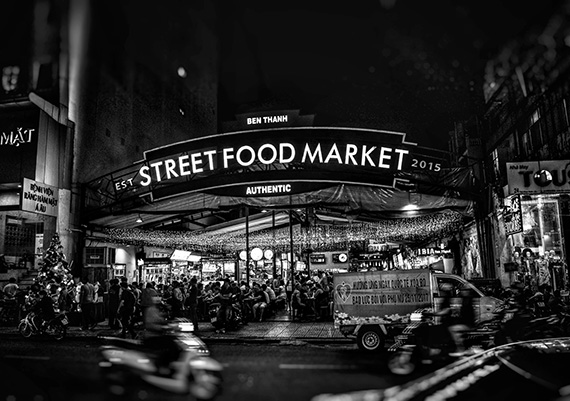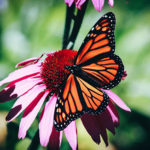Do you want to know the 5 tips to successfully reduce noise in images? Here are some things you can do to easily and successfully reduce noise with camera techniques or post-processing.

Photo by Son Vu Le
1. Low ISO Settings
To reduce the noise in the image, keep the ISO low. Increase it only when absolutely necessary. Higher ISO settings are suitable when you want to keep away from camera shake, or perhaps motion blur.
The slightest decrease in ISO settings are enough to make huge changes at reducing the noise in images, especially when they are at the highest ISO values.
2. Tripods and Camera Features
It will be of great convenience if you have a tripod. Attach your camera to your tripod. That way, you can have your camera set to the slowest ISO (ISO 100 will be good) with very little noise.
This method is applicable if your subjects are static and in low light condition. Better yet, if your camera has a Long Exposure Noise Reduction feature, make use of it!
3. Keep Away From Heat
Are you aware of the fact that your image noise can increase significantly when your camera’s sensor is hot? When you photograph under a hot and humid conditions, remember to always keep your camera away from being under direct sunlight.
Whenever you aren’t using your camera, keep it away in a bag. That’ll be the best option in such circumstances. When in winter, don’t leave your camera near the radiator.
4. Shoot In RAW
When possible, shoot in RAW. Shooting in RAW makes it more possible for you to tweak and sharpen images in post-processing.
5. Check The Noise
When you use the Detail tab in Adobe Camera Raw, begin with Noise Reduction. Set to 25 for Color. Set to 0 for Luminance. After that, zoom in and take a look at the image at 100%. This makes it possible for you to adjust these sliders so that it will suit the shot.
About the Author:
This article was written by Michelle Lee Fui Jinn from tipsforphotographers. It takes time to practice and improve your photography skills.
Like This Article?
Don't Miss The Next One!
Join over 100,000 photographers of all experience levels who receive our free photography tips and articles to stay current:






A simple form of noise reduction is a low-pass filter. If you look at a noise image, you see an area that should be a consistent color or gradient, but actually comes out with a variation due to noise.You can use Best noise reduction software to remove noise from the photos.
Some other:
– Buy a better camera (this can a lot of difference)
– Use noise reduction software such as Noise Ninja or Lightroom 4+
– Use low light lenses (prime lenses or f2.8 lenses). This allows you to keep the ISO a lot lower.
– Use a flash (bounced or external) to add some light.
I shoot weddings in low light settings and these points combined with keeping the ISO low and shooting in RAW means NEVER having any noise left in my images, pretty much no matter what the situation. I actually need to add noise back in again for those authentic B&W images.
Michael,
It is possible that it’s not a problem with your camera at all. It could simply be heat-haze. Similar to the wavy watery look that you have above a hot tar road in summer… or when you see petrol evaporating when filling the gas tank!
To be sure, try taking photographs in bright conditions when it’s not quite as hot. If it’s an equipment issue, you’ll know quite soon.
All the best with your photographs!
Tip 3 helps me …lol
Another tip is to over expose a RAW image in camera (without blowing the highlights) and then correct it back to the right level afterwards in the RAW converter. This will give less noise than an images that is correctly exposed to start with.
I recently took some photos of a forest fire in Colorado. The shots were made a couple of miles from the actual blaze, using both my Nikon D90 (with the 18-105mm lens), and my new Nikon D7000 (with the Nikon 70-300mm lens). When I got back home, and downloaded the shots onto my computer, I noticed that a house in the picture (with the smoke billowing from the fire about a half-mile behind it) looked a bit soft on focus. I used a tripod under sunny conditions during late morning hours. When I zoomed in on the house on my computer, it had the appearance of it melting; not just a focus issue. I thought perhaps it was an issue with the D7000 and the 70-300mm lens (my first time using both). Upon inspection of my shots with the D90 and the 18-105mm lens, I noticed the same thing, and I have never had that issue with my D90. Is this merely a heat issue, since my tripod and camera were in direct sun? The duration of that time was 15-20 minutes, and the temps were in the mid 70s.
Anxious to hear your thoughts. I would have sent the pictures, but not sure where to do so.
Thanks!
Michael Hailey
Clovis, NM, USA
6. reduce exposure time as much as possible by opening up the lens. thermal noise is brutal to img degradation and unlike read/pattern noise is not easily removed by img. processing apps.